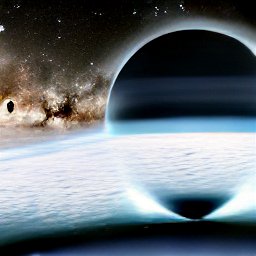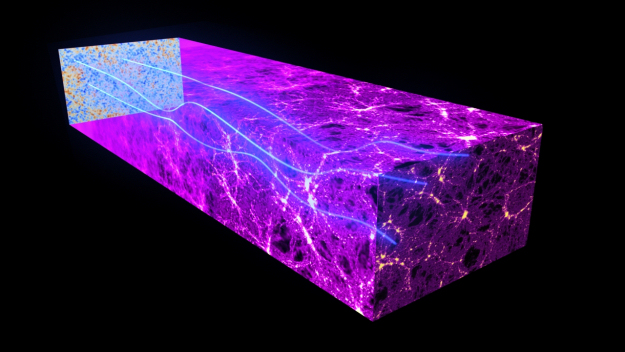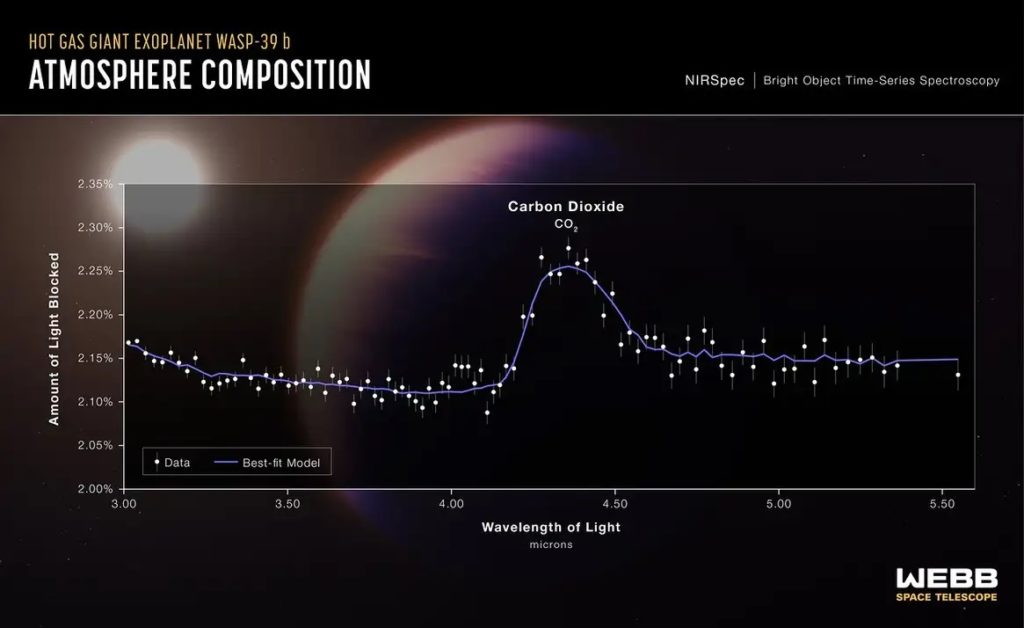
August had some small and cute ph-news, and as is often the case they all came from space. (I wish we also had elementary particle news more often, but when I signed up for it some decades ago I knew they rarely get to be in the limelight :p )
🌒 Mapping the invisible in cool ways
Of course, space itself is awesome. In fact it’s so awesome that one can easily overlook how remarkable some astrophysics and cosmology discoveries are in their own right – that is, what humungous technological and scientific achievements they comprise, regardless of the findings themselves.
And yes, we just had one more such case: Astrophysicists just made a map of dark matter around very distant galaxies, by looking at how their gravity distorts our view of the diffuse faint light that was emitted throughout the universe 13 billion years ago. Besides, this involved not one, not two, but 1.5 million galaxies.
Just think of it. Humanity had to find that there is a diffuse faint light across the whole sky in the first place (which is also known as the “cosmic microwave background”). It had to figure out where it came from (from processes between particles in the soup that the universe was a few hundreds of thousand years after the big bang). It had to observe and record it so well that we can tell where it is distorted and by how much; and while at it, humanity had to figure out that gravity can actually distort observations of light from the sky. Not to speak of having to be able to calculate how much distortion means how much mass that causes it.
Plus, it had to map the positions of galaxies accurately.
Also, it had to figure out that galaxies that move away from us faster are more distant and also that they formed earlier (this particular study focused on these older galaxies; keep reading for the why).
Thinking of it, the only part where humanity (or, at least, its astrophysicists) hasn’t done so great yet is in understanding what is going wrong with galaxies which are heavier than expected, and so we just call this thing “dark matter”.

Dark matter, that great mystery. One of the questions about it that keep some people awake at night is how it evolved over the lifetime of the universe. Knowing about how it appeared in galaxies when the universe was very young, say less than one billion years old (compared to its 13+ billion years at the moment), would be very useful in that aspect.
Sadly, seeing galaxies from so long ago means that they also have to be very far away from Earth (what with their light having to travel for 12 billion years before it reaches us). And this means that they look extremely dim (okay, here I’m going to gloss over the fact that the further away a galaxy is, the more Doppler-shifted its light, which makes it dimmer). Which is not helpful at all for observing them directly.
To bring it all together, the astro people at Nagoya University and elsewhere looked for the first time at dark matter in (again, 1.5 million) galaxies from that long ago, and the way to achieve this was by looking at how much their gravity distorts the cosmic microwave background.
If you’ve reached that far in this sermon and hopefully still think there is something impressive here, let me just add this: Finding the amounts of dark matter in galaxies at different eras of cosmic history will help clarify which of the proposed theoretical models describe it correctly (if any). In addition to, of course, being super geeky cool.
🌓 Exoatmospheres!
The James Webb space telescope started showing off what it can do with exoplanets. Specifically, it found that a giant gas planet (called WASP-39 b), some 700 light years away, has carbon dioxide in its atmospere.

How does it do it? It looks at planets that pass between their star and our telescope. It then does spectrography – it sees how the light from the star changes when seen through the planet’s atmosphere. Great things are expected from said telescope in this field and it seems to be warming up well.
🌕 The sound of a black hole
Sound can not happen in space because space is empty, right? Well, WRONG, space does have much gas in patches here and there, and guess what else humanity did a few years ago? It saw that sound waves propagate in the gas cloud around the black hole at the Perseus cluster of galaxies.
Recently. NASA decided it was high time for us to listen to them. And so we do in this vid:
Fun trivia: In order to become audible, they had to be shifted by 57 octaves. Because originally they are so bass that they have a frequency of ten million years.
So, see you around, if you feel like commenting on these beauties please do, oh and remember: No matter what the naysayers say, there are still two weeks of summer left!
—
Do you want to receive one monthly reminder with links to the Ph-word posts? Join the mailing list.

Ok, fine, we heard a black hole, but what exactly are we hearing? Is it the sound of matter being swallowed? Or the sound of spacetime fabric being ripped appart? And what is the direction of propagation of the soundwaves? Are we standing still regarding the black hole or should we rotate around it in order to listen to this sound?
Here is someone undaunted by long technical posts! xD
Let me be back after putting some thought…
To be a little pedantic, you mean they are so bass they have a *wavelength* of ten million years, don’t you? 😛